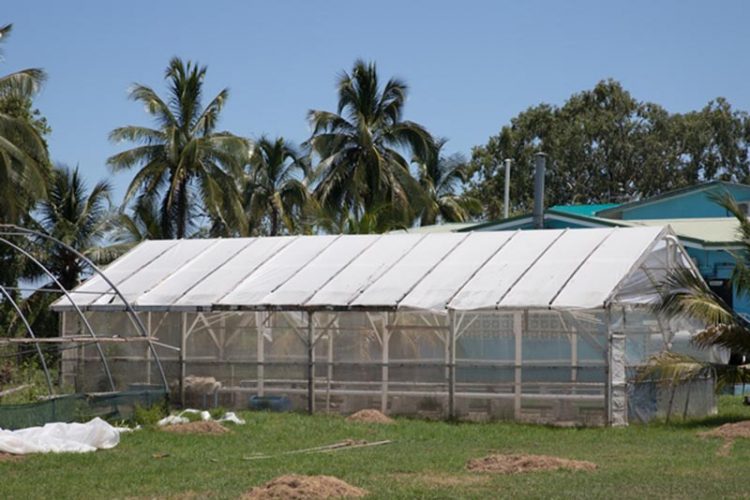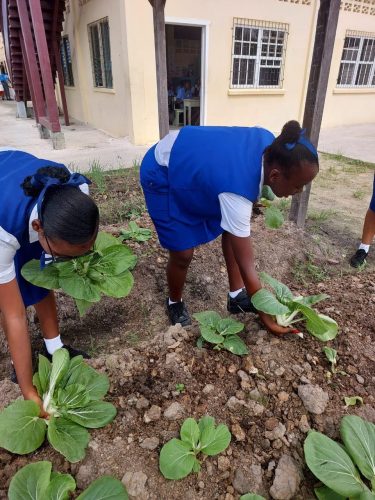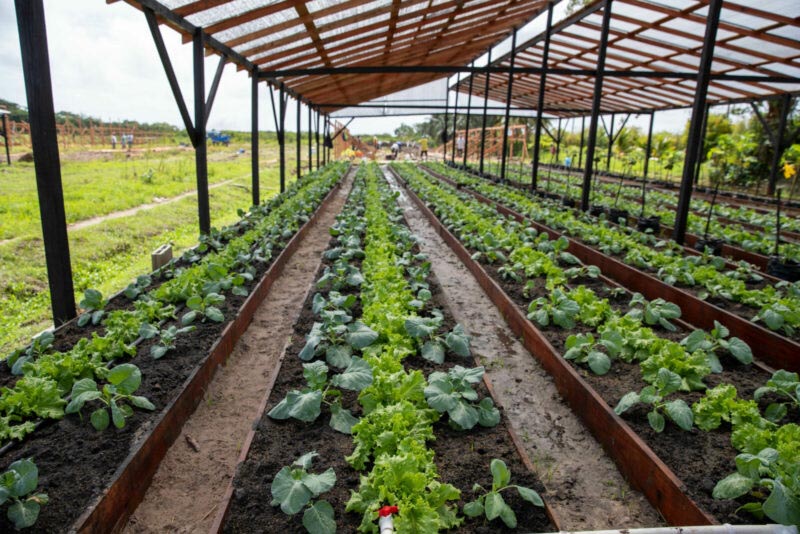Essequibo residents involved in the President’s Shade House Initiative, which is being piloted under the Agriculture and Innovation Entrepreneurship Programme, said they have found it beneficial as well as an effective method in the cultivation of some traditional and non-traditional crops.
The project, which has targeted farmers and secondary schools along the Essequibo Coast, is part of the government’s approach to meeting the Caribbean Community’s (Caricom) objective of reducing food imports by 25% by 2025.
School teacher Mala Bissessar of Dartmouth Secondary School told Stabroek News that the project has proven to be beneficial to both students and teachers. She explained while students used the initiative to meet their School Based Assessment (SBA) requirement, there was a ripple effect as teachers were also made aware of how they can utilise the system.

At the implementation of the project, she explained, they had planted, among other things, pepper, lettuce, and cauliflower. “We were able to get very good yields and students were able to sell it among teachers and their homes,” she explained.
According to Bissessar, the students were able to develop the skills of managing the business and what was needed to take care of a farm. She added that they were able to grasp that the shade house method of crop cultivation was not difficult and did not involve “backbreaking work” like traditional farming.
Her school was able to set up the shade house with support from the National Agriculture Research and Extension Institute (NAREI).
Over at Cotton Field Secondary School, Agriculture Teacher Gregory Tyrell, echoed similar sentiments.

“The children started planting from scratch. They started with the seedlings of broccoli, tomatoes, and pak choy in the first batch and it was a success. They have enjoyed this process, and using the shade house. We are now planting our second batch,” he said.
The school has a shade house measuring 50 feet by 70 feet which was set up under guidance from NAREI extension officers.
Tyrell related that using this method of planting, they had less weeds and pests among plants. He stated too that with the shade technology and the drip irrigation system the soil remained moist and plants did not require frequent watering.
“The controlled environment in which these plants were being cultivated made it interesting for students. They were able to see it did not require much pesticide and weedicide…,” he stated. In addition, he pointed out that another success of the shade house was the increase in yield as plants produced more in a longer period.
“We have finished the first batch and now while we are not commercial, we are going to try different crops like celery, cauliflower, and so on. We have to do crops that will last during the school term,” he said.
Thakechand Ramnauth, a cash crop farmer who grew up in agriculture, said he wished he had found this technology sooner. He stated that while he had heard of it before he didn’t have the experience to set it up. However, he reached out to the NAREI office in his region and they offered the much needed assistance.
“I can say it is something beneficial, because you don’t have to always water plants. The plants don’t get withered from the sun and you have good yields, better than when they are grown in the open,” he stated.
Ramnauth was very excited to share his story as he believes this is a method all farmers should employ. Since he has seen success, every open space in his yard is now occupied by a shade house and he has planted celery, cauliflower, spinach, tomatoes, peppers, broccoli among other vegetables.
“Some of the yields are 100 per cent better than when they were grown in the open and the way the beds are built, the plants are saved from flooding and there is not much weeds because as they come up you get them out. This is better,” Ramnauth emphasised.
The produce reaped, the Essequibo farmer said, was sold on the local market to residents and in some cases, restaurants.
When asked if he faced any challenges, he responded in the negative noting that his knowledge of managing and caring for a garden made the transition easy. He was quick to point out that he has been using less pesticide and weedicide since crops are being cultivated in a controlled environment.
At the January 2022 launch, President Irfaan Ali had posited that the shade house project targeted young professionals and was more than agriculture but rather a business opportunity for young people.
Pointing to the potential of the venture, he had said, “So you are talking here about a business that can generate in a net sense using these three costs, close to $60 to $70 million annually.” In 2018, Guyana imported $1.583 billion worth of carrots, cauliflower and broccoli; $1.962 billion in 2019, and $2.626 billion in 2021, he highlighted at the time.
“So while we’re working on one hand to expand local production for the local market, we are already eliminating the barriers to the regional markets, so that we are going to expand this progressively until we are able to reach into the regional market also. So you have to see yourselves as part of a regional system and part of the local system,” he had said.
Some 120 shade houses were constructed to support the success and expansion of the project by the end of 2022, the Ministry of Agriculture noted. It was stated that more shade houses will soon be constructed to promote the growth of high-value crops such as cauliflower, bell peppers, tomatoes, and carrots.
Agriculture Minister Zulfikar Mustapha had disclosed earlier this year that this lucrative project earned more than $10 million and majority of the produce was being sold to the oil and gas industry and the hotel chains in the country.
A shade house is a structure that provides protection for plants from excessive sunlight and heat. It is usually made of a frame of poles or metal tubing covered with a shade cloth or netting that reduces the amount of direct sunlight reaching the plants. They can be used for a variety of purposes such as growing shade-loving plants like ferns or for protecting plants from harsh weather conditions. These structures are commonly used in nurseries, greenhouse operations, and backyard gardens. Shade houses can also help to conserve water by reducing evaporation and protecting plants from wind damage.






